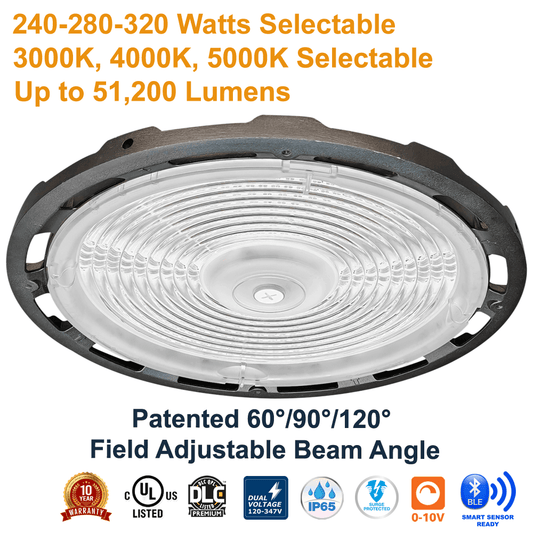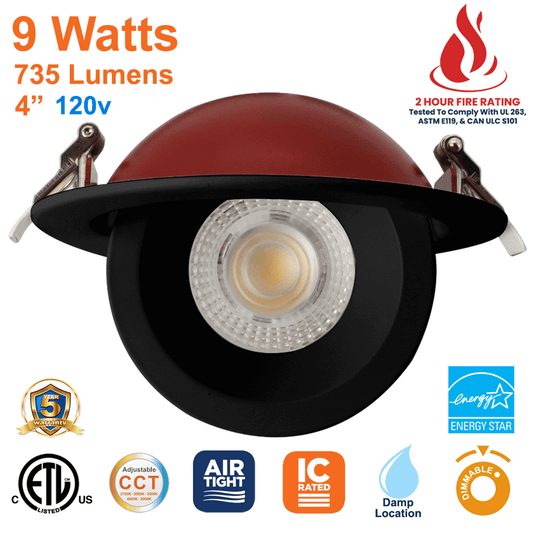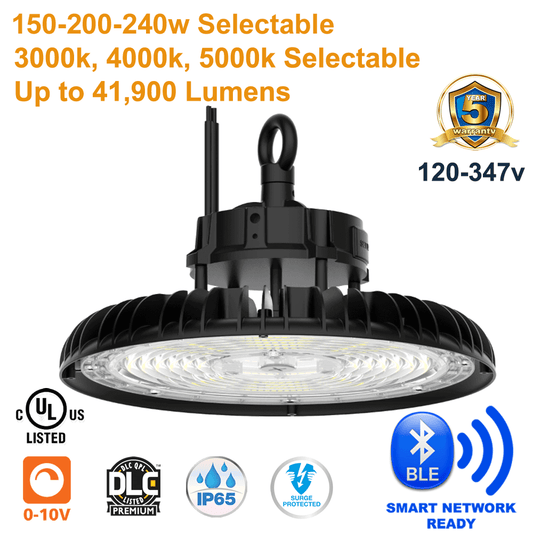Summary: The shift of Work Lights to LED technology has revolutionized the way we light up workspaces, especially in construction sites. They're LED Work Lights are energy-efficient, durable, and offer unparalleled brightness. This article looks into what LED Work Lights are, their advantages, and how to choose the best one for your needs. We'll also explore the importance of features like Wire Guards and IP Ratings, and how LED technology outshines other lighting options.
Table of Contents
- What is a Work Light?
- What is the Best Lighting for a Work Site?
- How Bright Should Work Site Lighting Be?
- Why is LED the Best Choice for Work Lights?
- Is it Important to Have a Wire Guard/Wire Cage on My Work Light?
- Are LED Work Lights Energy Efficient?
- Is Wattage Important for LED Work Lights?
- Can I Use an LED Work Light Outdoors?
- What Does IP Rating Mean for a Work Light?
- What is the Best Colour Temperature for a Work Light?
- How Long Do Work Lights Last?
- Can You Link LED Work Lights Together So They Become String Lights?
- What are Other Names for Work Lights?
- Frequently Asked Questions
What is a Work Light?
A Work Light is a portable lighting device which now most oftern uses LED (Light Emitting Diode) technology to produce light. Unlike traditional bulbs, LEDs are more energy-efficient, last longer, and are more durable. These lights are especially useful in workspaces where bright, consistent lighting is essential. Whether you're on a construction site, in a workshop, or even in your backyard, an LED Work Light can provide the illumination you need.
For a deeper dive into the world of LEDs, check out What is an LED?.
What is the Best Lighting for a Work Site?
The best lighting for a work site depends on the nature of the work and the environment. However, LED lights, especially those designed for job sites, are often the top choice. They offer bright, consistent light that can cover large areas, making tasks easier and safer.
For those in construction, Construction Lights are a must-have. They're designed to withstand the rigors of a construction site, ensuring that work can continue, no matter the time of day.
How Bright Should Work Site Lighting Be?
Brightness in lighting is measured in lumens. The required brightness for a worksite depends on the specific tasks being performed and the size of the area. Understanding lumens is crucial when choosing lighting for any space. For a comprehensive guide on lumens, visit Everything You Need to Know About Lumens.
Why is LED the Best Choice for Work Lights?
LEDs are the best choice for Work Lights for several reasons:
- Energy Efficiency: LEDs consume less power than traditional bulbs, leading to significant energy savings. This efficiency is not only good for the environment but also for your wallet. Learn more about the impact of lumens per watt in commercial lighting.
- Durability: LEDs are solid-state lights, meaning they're more rugged than incandescent and fluorescent lights. They can withstand shocks, vibrations, and external impacts, making them perfect for rough work environments.
- Longevity: LED Work Lights have a longer operational lifetime, often lasting up to 50,000 hours or more. This means fewer replacements and reduced maintenance costs.
- Brightness: LED lighting provides bright, consistent light, essential for tasks that require precision.
Is it Important to Have a Wire Guard/Wire Cage on My Work Light?
Absolutely! A wire guard or wire cage is a protective cover that surrounds the polycarbonate cover around the Work Light’s LEDs. This guard protects the LEDs from accidental damage, especially in busy or rough work environments. It's an essential feature for Work Lights used in construction sites or workshops where the risk of damage is high.
Are LED Work Lights Energy Efficient?
Yes, LED Work Lights are incredibly energy-efficient. They consume a fraction of the power that traditional bulbs use, leading to significant energy savings. This efficiency translates to lower electricity bills and a reduced carbon footprint. For a detailed comparison of LED efficiency, read Behind the Glow: How LED Outshines Metal Halide Every Time.
Is Wattage Important for LED Work Lights?
Wattage indicates the power consumption of a bulb or light fixture. In traditional lighting, higher wattage often meant brighter light. However, with LEDs, brightness is not directly tied to wattage. LED Work Lights can produce the same, if not more, brightness as their incandescent counterparts while consuming significantly less power. Therefore, when selecting an LED Work Light, it's more important to look at lumens (brightness) rather than wattage. However, understanding wattage can still be beneficial in estimating energy consumption and costs.
Can I Use an LED Work Light Outdoors?
Absolutely! Many LED Work Lights are designed for both indoor and outdoor use. When selecting a light for outdoor use, it's essential to consider factors like weather resistance and durability. LED lights designed for outdoor use often come with features like waterproofing and dust resistance.
For those who often work outdoors, Outdoor Work Lights are specially designed to withstand the elements, ensuring consistent and reliable lighting in any condition.
What Does IP Rating Mean for a Work Light?
IP Rating, or Ingress Protection Rating, indicates the level of protection a device has against solids (like dust) and liquids (like water). It's a standard used to define the sealing effectiveness of electrical enclosures. For Work Lights, especially those used outdoors or in dusty environments, a higher IP rating is beneficial.
The IP rating is usually followed by two numbers. The first number indicates protection against solids, and the second number indicates protection against liquids. For instance, an IP65-rated Work Light is dust-tight and protected against water jets.
For a more detailed understanding of IP ratings and their importance in LED fixtures, check out Your Complete Guide to IP Ratings for LED Fixtures.
What is the Best Colour Temperature for a Work Light?
Colour temperature, measured in Kelvin (K), determines the warmth or coolness of the light emitted by a bulb. For work environments, especially those requiring attention to detail, a clear daylight light (around 5000K) is most often preferred. This provides clear, bright light that accurately represents colours.
However, the best colour temperature can vary based on personal preference and the specific task at hand. For a deeper understanding of colour temperature and its significance in lighting, explore What is Colour Temperature & Why is it Important for Lighting?
How Long Do Work Lights Last?
The longevity of a Work Light largely depends on its build quality and usage. However, LED Work Lights are known for their extended lifespan. On average, LED Lights Work Lights last up to 50,000 hours or more, which is significantly longer than traditional incandescent or halogen bulbs. This extended lifespan means fewer replacements, reduced maintenance costs, and more consistent lighting over time.
Can You Link LED Work Lights Together So They Become String Lights?
Yes, many modern LED Work Lights come with the capability to be linked together, creating a chain or string of lights. This feature is especially useful for illuminating larger areas or when multiple lights are needed in a linear fashion. Linkable Work Lights are designed with connectors or outlets, allowing for easy expansion and customization of your lighting setup.
What are Other Names for Work Lights?
Work Lights, given their versatility and widespread use, are known by various names based on their application and design. Some alternative names include:
-
Job Site Lights: Often referring to lights used in construction sites or areas of active work. Check out Job Lights for a range of options tailored for specific tasks.
-
Construction Lights: Specifically designed for construction environments, these lights prioritize durability and brightness. Dive into the world of Construction Lights for robust lighting solutions.
-
Portable LED Work Light: Emphasizing the portability feature, these lights can be easily moved and adjusted as per the task's requirements.
-
Outdoor Work Lights: As the name suggests, these are designed to withstand external elements, making them perfect for outdoor tasks.
-
Linkable Work Lights: Lights that can be connected in a series, offering extended illumination. Explore Linkable Lights for customizable lighting setups.
-
Construction String Lights: A series of lights connected in a string format, ideal for illuminating larger areas. They combine the features of Work Lights and string lights for broader coverage.
Frequently Asked Questions (FAQ) about LED Work Lights
1. How do LED Work Lights differ from regular LED lights?
LED Work Lights are specifically designed for task-oriented applications, offering higher brightness and durability compared to regular LED lights. They often come with features like portability, weather resistance, and high brightness to cater to specific work environments.
2. Are LED Work Lights safe for the eyes?
Yes, LED Work Lights are generally safe for the eyes. However, it's essential to choose lights with the right colour temperature and avoid direct eye exposure to very bright lights for extended periods.
3. Can LED Work Lights operate in extreme temperatures?
Most LED Work Lights are designed to operate in a range of temperatures, from very cold to very hot. However, it's always a good idea to check the manufacturer's specifications to ensure the light's suitability for extreme conditions.
4. How do I choose the right LED Work Light for my needs?
Consider factors like the required brightness (lumens), power source (corded or battery-operated), portability, durability, and any additional features like linkability. Your specific work environment and tasks will dictate the best choice.
5. How do I maintain and clean my LED Work Light?
LED Work Lights require minimal maintenance. To clean, switch off and unplug the light, then wipe it down with a soft, damp cloth. Avoid using harsh chemicals or abrasive materials.
6. Do LED Work Lights attract insects?
LEDs, in general, are less attractive to insects than traditional light sources. However, the attraction can vary based on the light's color temperature and other factors.
7. Can I replace the LED bulb in my Work Light?
Many LED Work Lights come with integrated LED modules, meaning the bulb is not replaceable. However, given the long lifespan of LEDs, replacements are infrequent. Always refer to the manufacturer's guidelines.
8. Do LED Work Lights emit UV radiation?
No, LED lights do not emit UV (ultraviolet) radiation, making them safer for various applications, including close-up tasks.
We hope this FAQ section addresses any lingering questions you might have about LED Work Lights. For more detailed information or specific product recommendations, don't hesitate to reach out to us or explore LED Network.



























